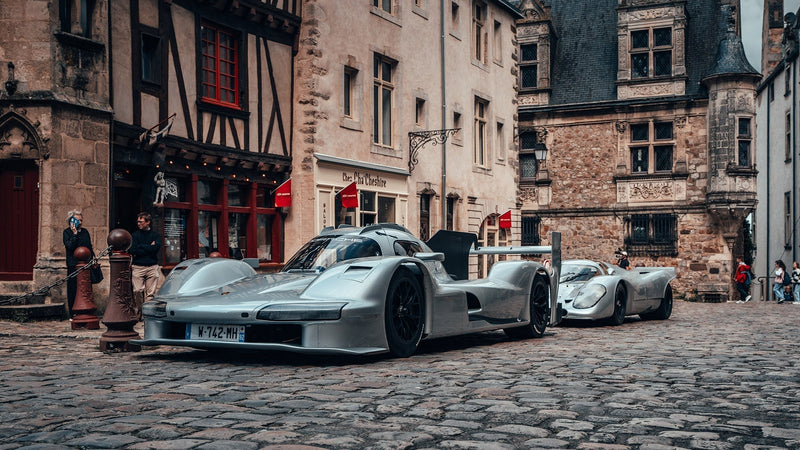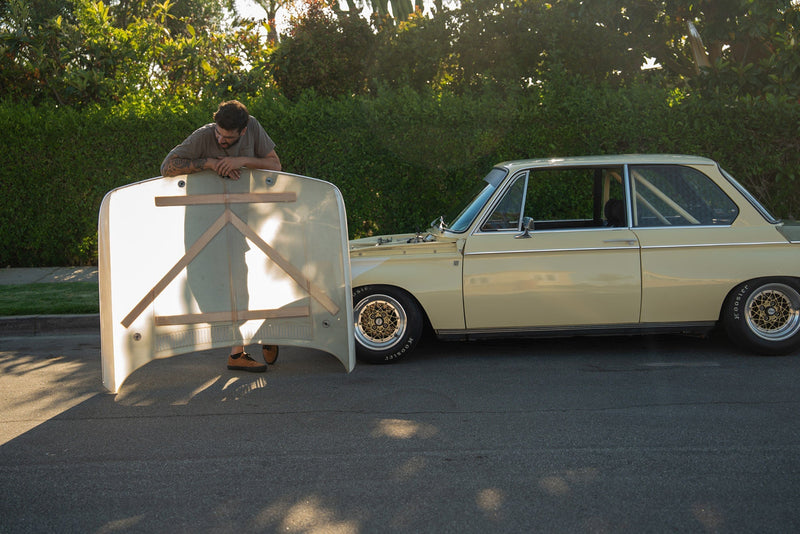Most car events last for a day, at most a three-day weekend. Lime Rock’s Historic Festival takes place over five full days of parades, racing, and a concours thats larger than the size of the track would suggest all in a small town in Connecticut. A bit of a hidden gem in comparison to the headlining classic car events of the summer like the ones taking place at Goodwood and in Monterey. The level of car might be a bit lower than you’d get at those events, but at Lime Rock you still get a great array of classic race cars, and in an atmosphere that’s more intimate and less dictated by a maze of chain link fences and a lanyard flying a dozen different tickets to get through them.







Most of the cars you see in the paddocks will be racing at least once during the day, and while the schedule has few gaps on race days and creates a general hurried air in the pit areas with the constant sound of close-by racing in the background, everything moves along without trouble. Mechanics lean into engine bays and hustle back and forth between racks of tools and open hoods, drivers are suiting up and performing last minute checks and plenty of golf carts and scooters are zipping by in the lanes between the tents and trailers.







The cars that aren’t racing are treated to a bit more relaxation as they just have to sit pretty next to their racing kin, like the step-nose Alfa Romeo (sporting a Chinetti Motors license plate frame and N.A.R.T. logos) and the beautiful metallic brown Series 1 E-Type that were tucked away between big haulers and pick up trucks chock full of race spares. In the secondary paddock the cars in wait (here there are mainly American Trans-Am cars and different cuts of 911) are surrounded by a swap meet of sorts. Old Alfas with for sale signs are out in front of tables lined with magazines, while some booths look like they have enough parts to build an MGA three times over.
Some of the more notable cars that I saw in the paddock and in action included a 1935 Alfa Romeo 8C-35 (which won the Coppa Ciano in 1936 with Scuderia Ferrari’s Tazio Nuvolari at the wheel), a 1958 Ferrari 250 TR that competed in that year’s 24 Hours of Le Mans, a 1967 Lola T70 MKIII, and a few other rare cars that were joined by a seemingly unending number of MGs, Triumphs, Lotuses, and Porsche 911s. My personal favorite was the 1968 Penske Sunoco Camaro, a car built for the Trans-Am Championship during the time when great (and quasi-legal) lengths were gone to to ensure a competitive edge.





Acid-dipped bodies, lightweight and ineffective roll cages, parts borrowed from other racing series, and more of this behavior was the norm for those golden years in the late ’60s and early ’70s, and alongside the Bud Moore Mustangs and the Penske Javelins, these blue and yellow Camaros symbolize the racing I wish I could have been around for in person. The vintage recreation is the next best thing to watching these cars go at it in period, and the V8s still sound as mean as ever.
Having the chance to watch some of your hero cars put on a proper display of racing (or at the very least a parade worth paying attention to) is the draw for any historic motorsport event, but Lime Rock’s version also offers the quaint, idyllic New England setting that delivers on the nebulous “atmosphere” element in a way that few others can—Lime Rock is no dinky infield layout surrounded by paved parking lots, but it’s not a massive modern course lined with VIP boxes either. The place is the perfect mix of quaint and serious (about every major American racing series you can think of has been to Lime Rock), and though there are bigger spectacles to choose from, the Historic Festival weekend is an example of the perfect “locally-grown” alternative.
















































































